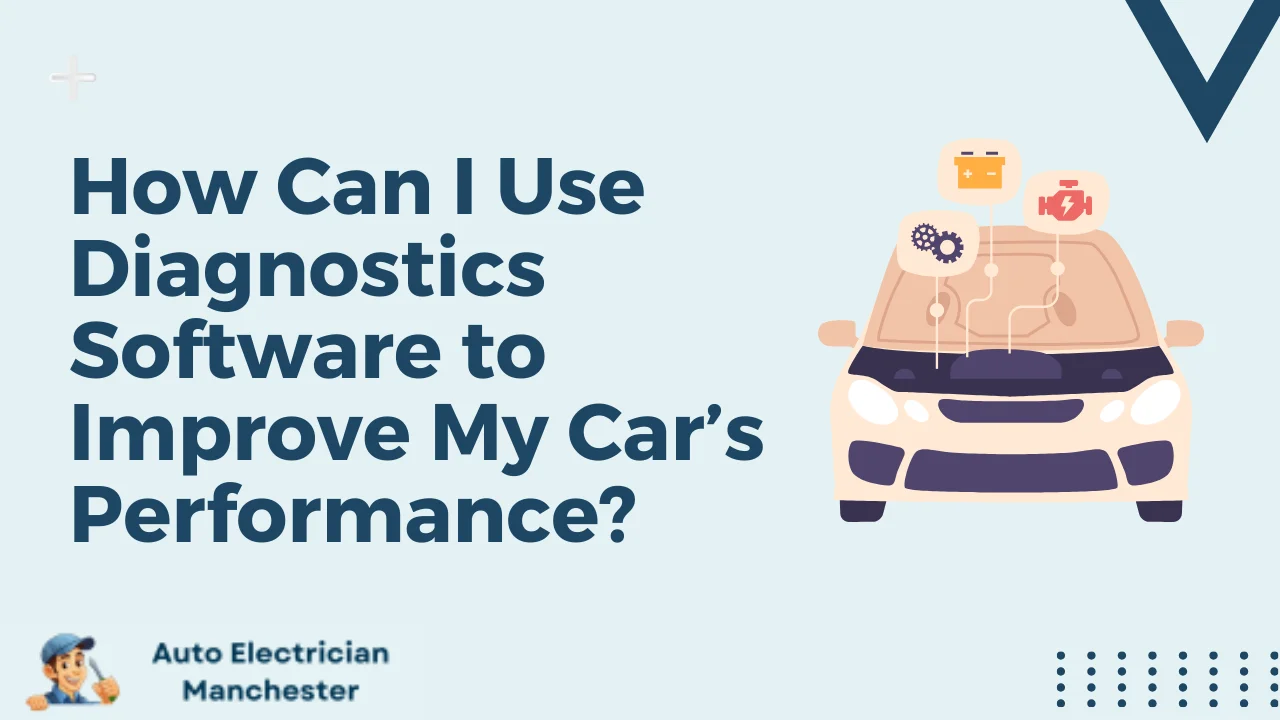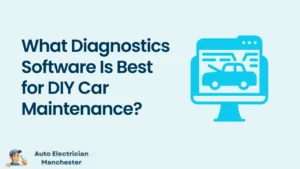
Car diagnostic software is an empowering tool for car owners who want to unlock their vehicle’s full potential. By connecting to your car’s On-Board Diagnostics (OBD) port, this software transforms a cryptic stream of data into clear, actionable insights. Let’s delve into how diagnostic software can transform your car’s performance:
Diagnose Engine Issues Early On
Imagine a tiny detective working tirelessly under your hood. That’s essentially what diagnostic software does. It meticulously scans your car’s internal systems, identifying hidden trouble codes that could be hindering performance. These codes can reveal anything from malfunctioning sensors to issues with the emissions system. Early detection is key to preventing minor problems from turning into major (and expensive) repairs down the road. By acting on these insights, you can nip performance-sapping problems in the bud, saving money and ensuring a smoother driving experience.
Become Your Car’s Performance Guru
Car diagnostic software empowers you to become your car’s very own performance guru. It acts as a virtual mechanic, constantly monitoring vital engine health metrics. Think of it like a real-time report card for your car. You’ll see key data points like fuel trims, air intake temperatures, and oxygen sensor readings. By understanding how these values fluctuate, you can identify areas for improvement. This knowledge can lead to better fuel economy, smoother operation, and ultimately, a more enjoyable driving experience.
Silence the Nagging Check Engine Light
The dreaded check engine light – a source of worry for many drivers. Thankfully, diagnostic software can often be your knight in shining armor. Once you’ve addressed the underlying cause of the warning light (as identified by the diagnostic tool), the software can often reset the light itself. This clears your dashboard and ensures you don’t miss future critical warnings. However, it’s important to remember that resetting the light is only a temporary fix. By addressing the root cause of the issue, you’re ensuring your car runs optimally and avoiding potential problems down the line.
Power of Diagnostics: Key Considerations
While diagnostic software equips you with valuable knowledge about your car, interpreting complex data can have a learning curve. For advanced adjustments or repairs, consulting a certified mechanic is always recommended. Their expertise can ensure intricate issues are addressed correctly and safely. However, with the right software and a thirst for knowledge, you can become a more informed car owner, capable of taking proactive steps to keep your car running at its peak performance.
Can Diagnostic Tools Really Improve Horsepower?
Absolutely! While diagnostic software won’t magically transform your car into a race car, it can help you optimize performance in ways that indirectly boost horsepower. Here’s how:
Identifying Sensor Issues: Faulty sensors can throw off engine timing and air-fuel ratios, leading to power loss. Diagnostic tools can pinpoint these issues, allowing you to address them and restore optimal performance.
Monitoring Engine Health: Worn-out spark plugs, clogged air filters, and dirty fuel injectors can all sap horsepower. Diagnostic software allows you to monitor these components and proactively replace them before they significantly impact performance.
Data-Driven Maintenance: By keeping a close eye on engine vitals, you can tailor your maintenance schedule to address specific needs. This can help prevent performance-related problems before they arise.
Free vs. Paid Diagnostic Software: Which One’s Right for You?
The answer depends on your needs and budget. There are a variety of free diagnostic software options available, many in the form of smartphone apps. These can be a good starting point for basic checks and reading trouble codes. However, paid software often offers more features, such as:
Live Data Monitoring: Get real-time readings of vital engine parameters.
Advanced Code Analysis: Provides detailed explanations of trouble codes and potential solutions.
Graphing Capabilities: Track trends in engine data over time to identify developing problems.
Compatibility with More Vehicles: Paid software often supports a wider range of car makes and models.
OBD-II Scanner vs. Professional Diagnostics
On-board diagnostics (OBD) scanners are basic tools that connect to your car’s OBD-II port and provide a limited set of features, typically focused on reading trouble codes. They’re a good option for basic troubleshooting and checking the Check Engine Light.
Professional diagnostics offered by mechanics use sophisticated equipment that goes beyond OBD-II capabilities. This equipment can delve deeper into your car’s computer systems, analyze complex data streams, and perform advanced tests. If you suspect a serious issue or need intricate repairs, professional diagnostics are the way to go.
Advanced Techniques for Power Users
Diagnostic software empowers you to go beyond simply reading trouble codes. With some additional knowledge, you can delve deeper into the data and unlock a world of performance optimization. Here are a few techniques for power users:
Understanding Live Data Streams: Advanced software allows you to monitor various engine parameters in real-time. By analyzing how these values change under different driving conditions (e.g., city vs. highway), you can identify areas for improvement. For example, a significant drop in fuel trims under heavy acceleration might indicate a clogged fuel injector.
Customizable Gauges and Alerts: Many programs allow you to create custom dashboards that display the most relevant data points for you. You can also set up alerts to notify you when specific values deviate from optimal ranges. This proactive approach can help you nip performance issues in the bud before they become noticeable.
Data Logging and Trend Analysis: By logging data over time, you can identify trends and patterns that might not be evident from a single snapshot. For instance, a gradual increase in coolant temperature might indicate a failing thermostat before it leads to overheating.
Choosing the Right Diagnostic Software
With a plethora of diagnostic software options available, selecting the right one can be overwhelming. Here are some key factors to consider:
Compatibility: Ensure the software is compatible with your car’s make, model, and year.
Features: Consider the features most important to you. Basic code reading or advanced data analysis tools?
User Interface: Choose software with a user-friendly interface that makes data interpretation easy.
Cost: Free vs. paid software. Consider the features you need and weigh them against the cost.
Conclusion
Car diagnostic software is a powerful tool that empowers you to take charge of your car’s performance. By providing valuable insights into your engine’s health, it equips you to identify problems early, optimize performance, and ultimately, extend the life of your vehicle. Whether you’re a seasoned gearhead or a curious car owner, there’s a diagnostic software solution waiting to unlock your car’s hidden potential. So, take the wheel, embrace the data, and experience the joy of a car performing at its peak.
FAQ
Can diagnostic software damage my car?
No, diagnostic software is designed to safely read data from your car’s computer. However, it’s crucial to avoid tampering with settings you don’t understand, as this could potentially cause problems.

David Mack is a seasoned writer with a passion for the auto electrician niche. With years of hands-on experience and a knack for demystifying complex topics, David brings practical insights to his readers. Whether you’re a professional or a car enthusiast, his engaging articles offer valuable tips and trends in auto electrical systems.
